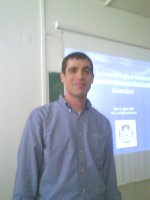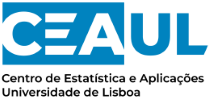
- Prof. Ben Reis – Harvard Medical School and Boston Children´s Hospital
- FCUL (DEIO) – Campo Grande – Bloco C/6 Piso 4 – Sala 6.4.31 – 14:30h
- Segunda-feira, 16 de Março de 2009

Abstract:
Advanced disease-surveillance systems have been deployed worldwide to provide early detection of infectious disease outbreaks and bioterrorist attacks. Most current generation surveillance systems are vulnerable to dramatic and unpredictable shifts in the health-care data that they monitor. These shifts can occur during major public events, such as the Olympics, as a result of population surges and public closures. Shifts can also occur during epidemics and pandemics as a result of quarantines, the worried well flooding emergency departments or, conversely, the public staying away from hospitals for fear of nosocomial infection. Public-health crises and major public events threaten to undermine health-surveillance systems at the very times they are needed most. To address this challenge, we introduce a class of epidemiological network models that monitor the relationships among different health-care data streams instead of monitoring the data streams themselves. By extracting the extra information present in the relationships between the data streams, these models have the potential to improve the detection capabilities of a system.http://www.chip.org/profile.cgi?id=reis) is a computational epidemiology and public health informatics expert, member of the faculty at Harvard Medical School and at the Children’s Hospital Informatics Program at the Harvard-MIT Division of Health Science and Technology. He holds a Ph.D. from the University of Cambridge, having completed his postgraduate training at Harvard Medical School.http://healthmap.org/about.php) or AEGIS platform (http://aegis.chip.org/).
Furthermore, the models’ relational nature has the potential to increase a system’s robustness to unpredictable baseline shifts.
Results show that the network models provide better detection of localized outbreaks, and greater robustness to unpredictable shifts than a reference time-series modeling approach.
THE SPEAKER:
Ben Reis (
He has been interested in developing real time disease-surveillance schemes to monitor natural or bioterrorism induced outbreaks, such as HealthMap application (
HealthMap brings together disparate data sources to achieve a unified and comprehensive view of the current global state of infectious diseases and their effect on human and animal health. This freely available Web site integrates outbreak data of varying reliability, ranging from news sources (such as Google News) to curated personal accounts (such as ProMED) to validated official alerts (such as World Health Organization).
The AEGIS System performs automated, real-time surveillance for bioterrorism and naturally occurring outbreaks. It is the syndromic surveillance system for the Massachusetts Department of Public Health, enabling real time population health monitoring.
